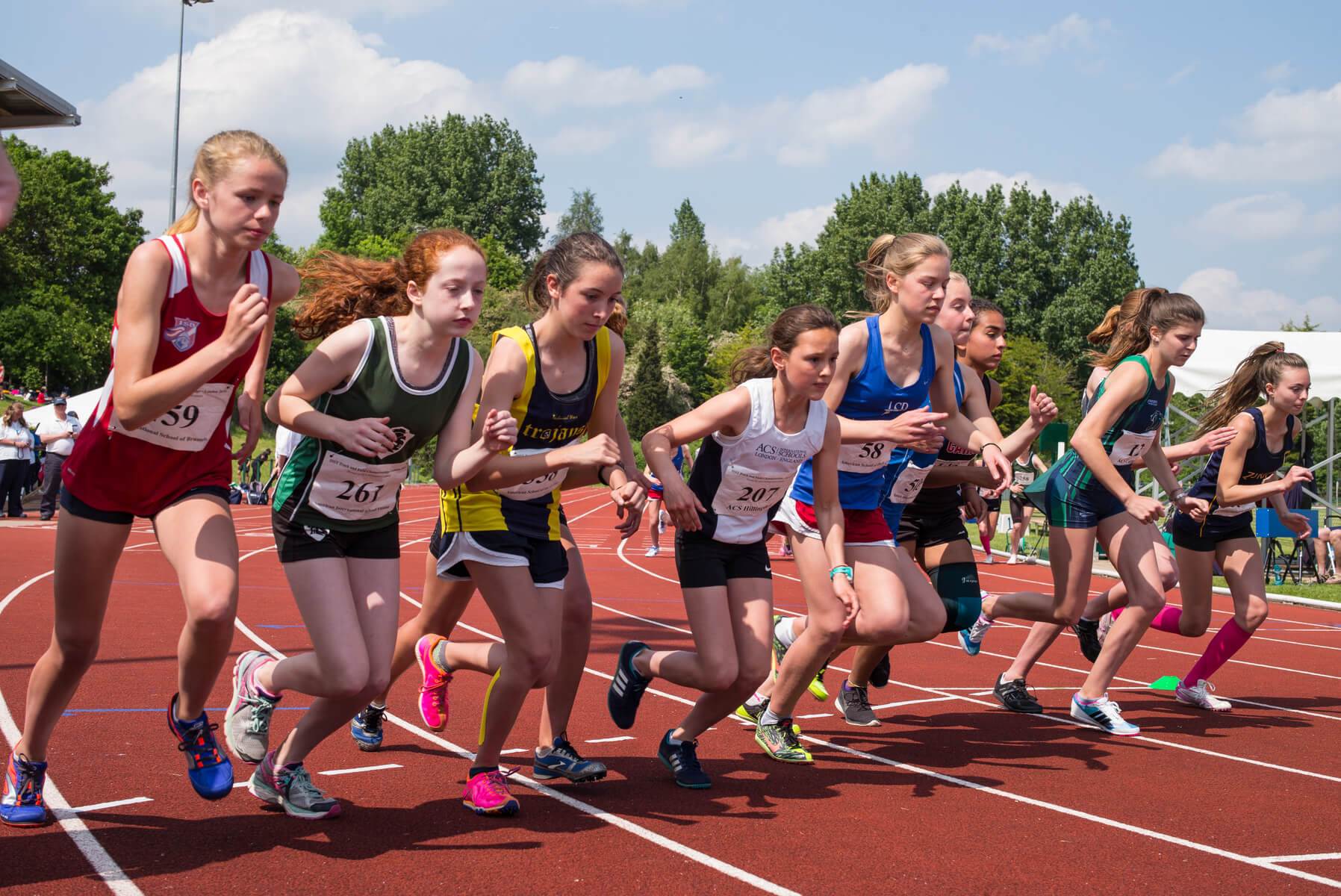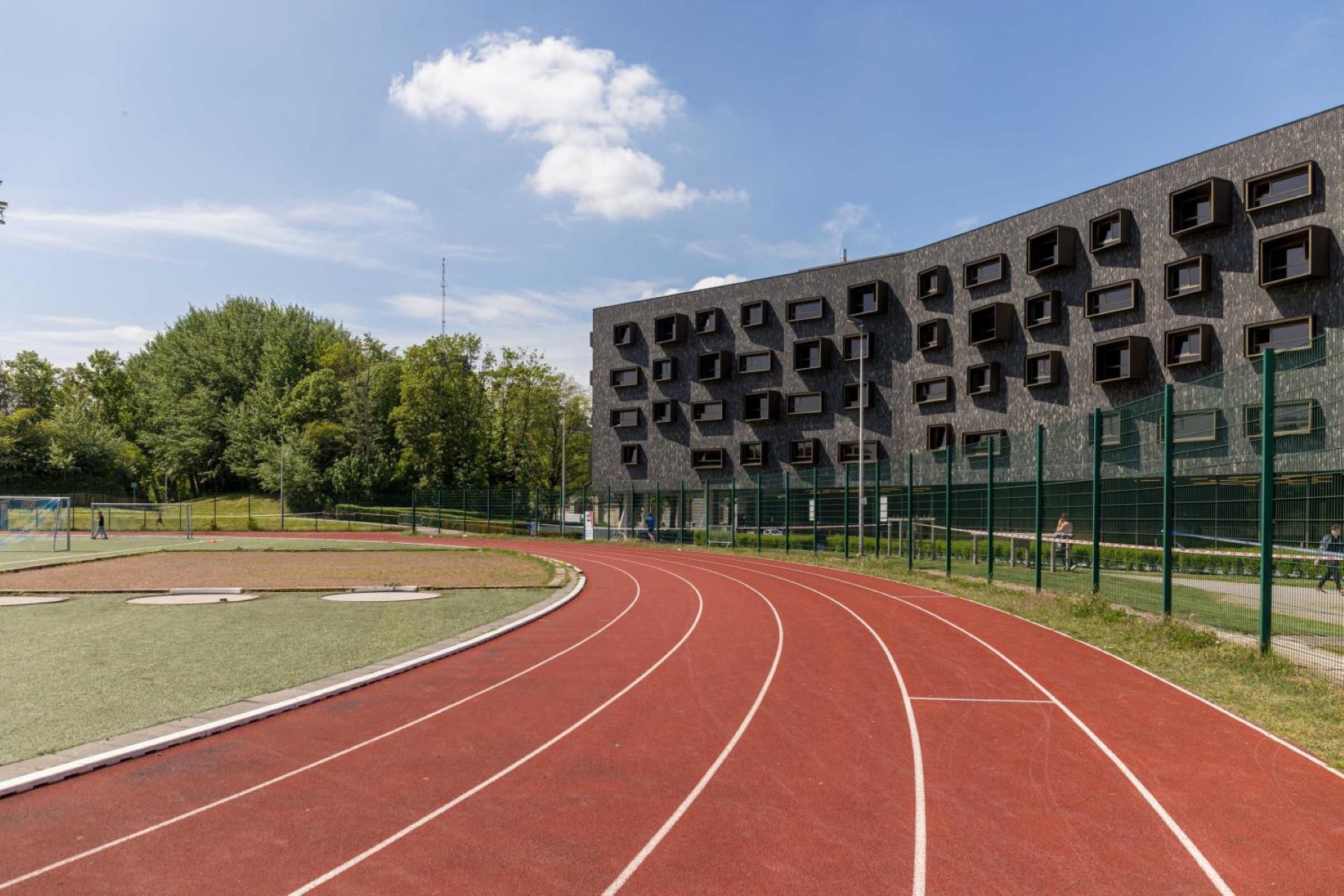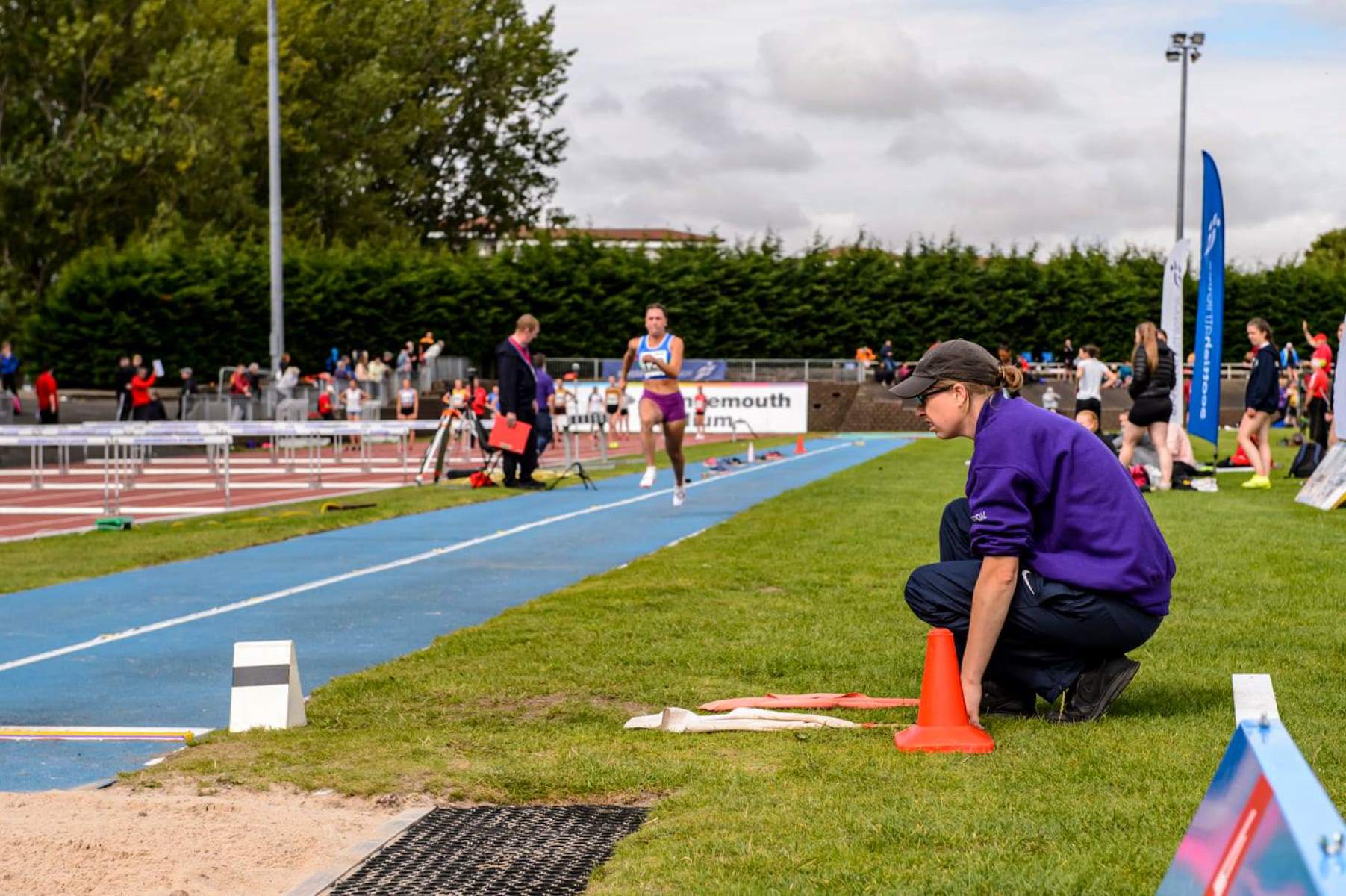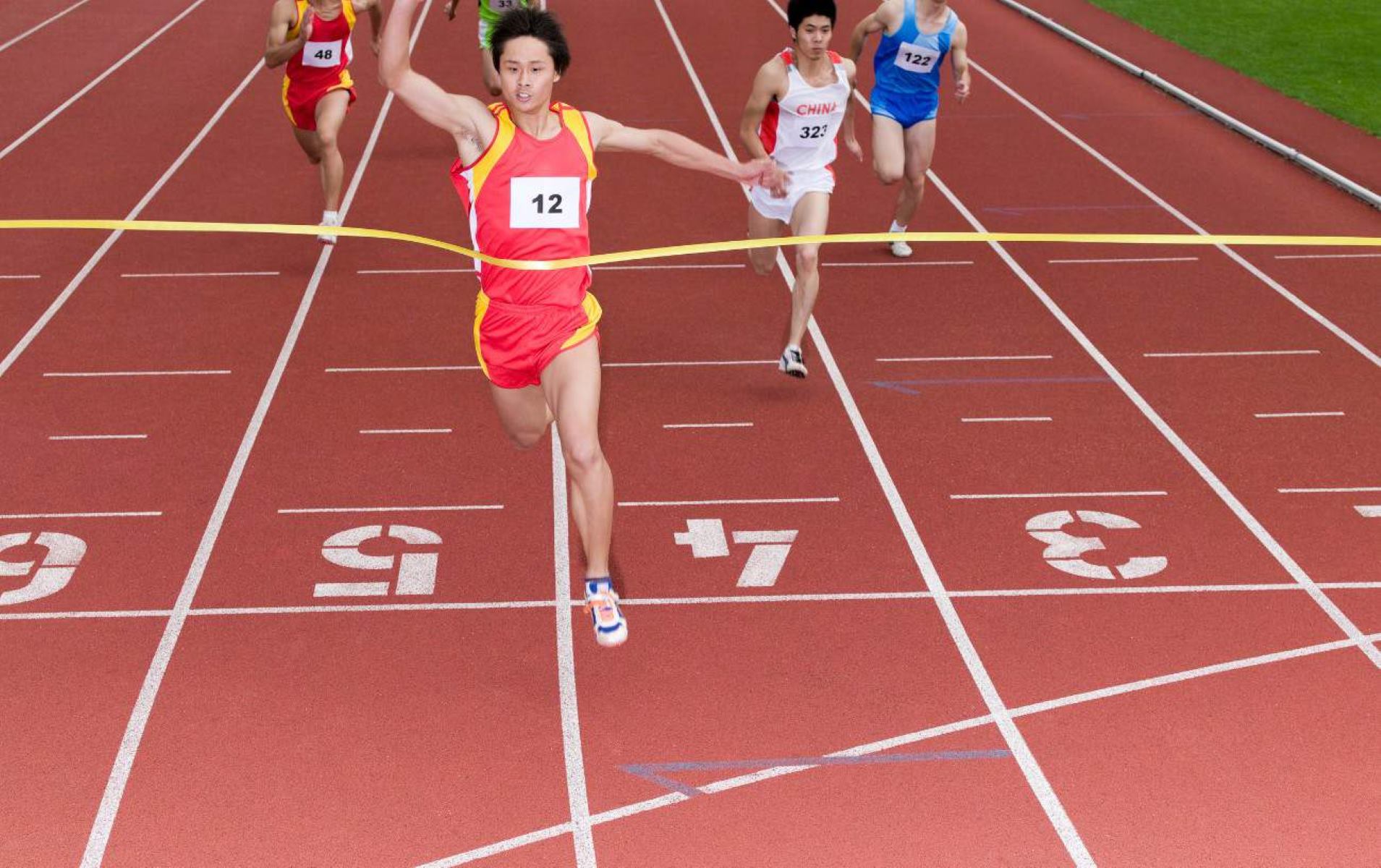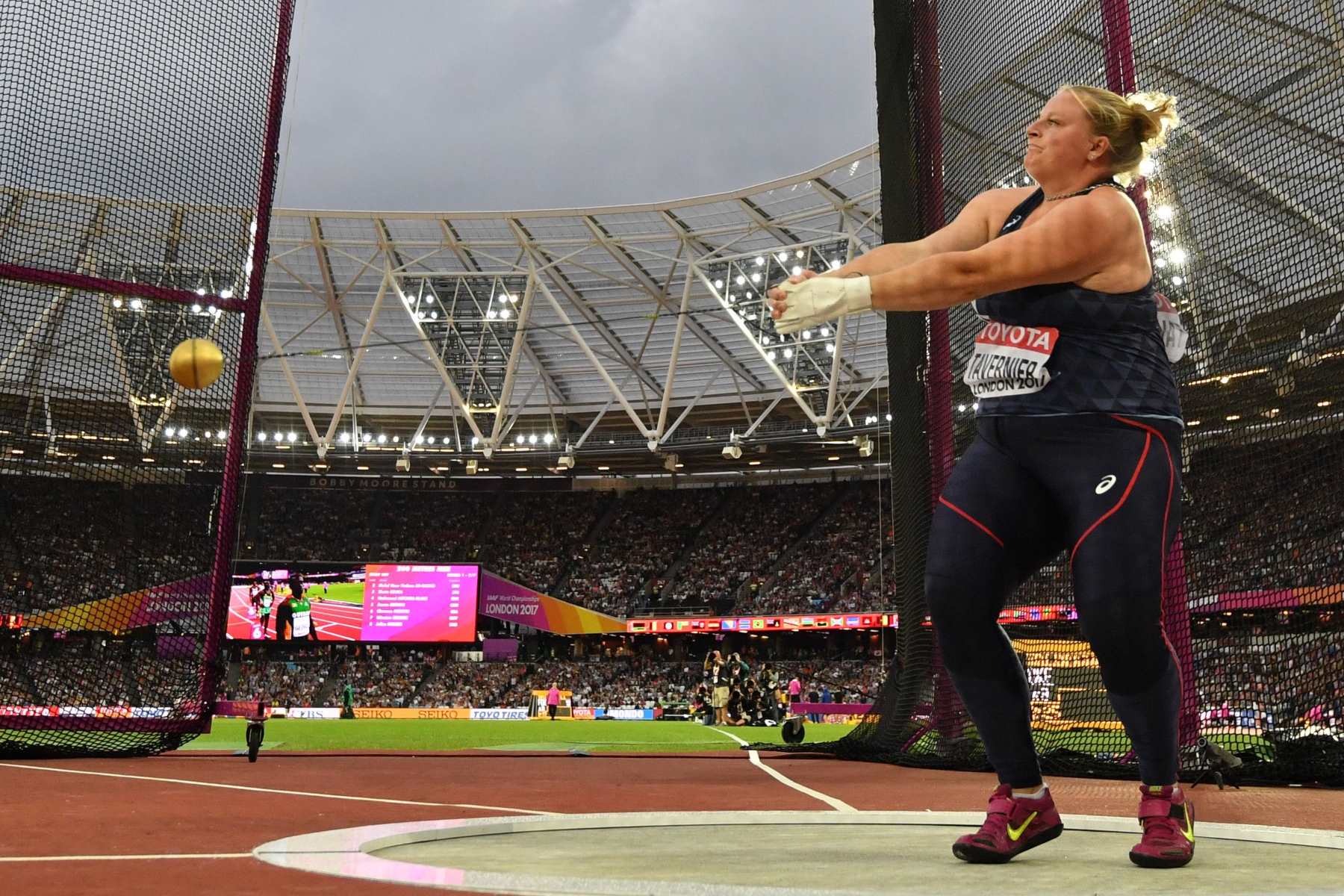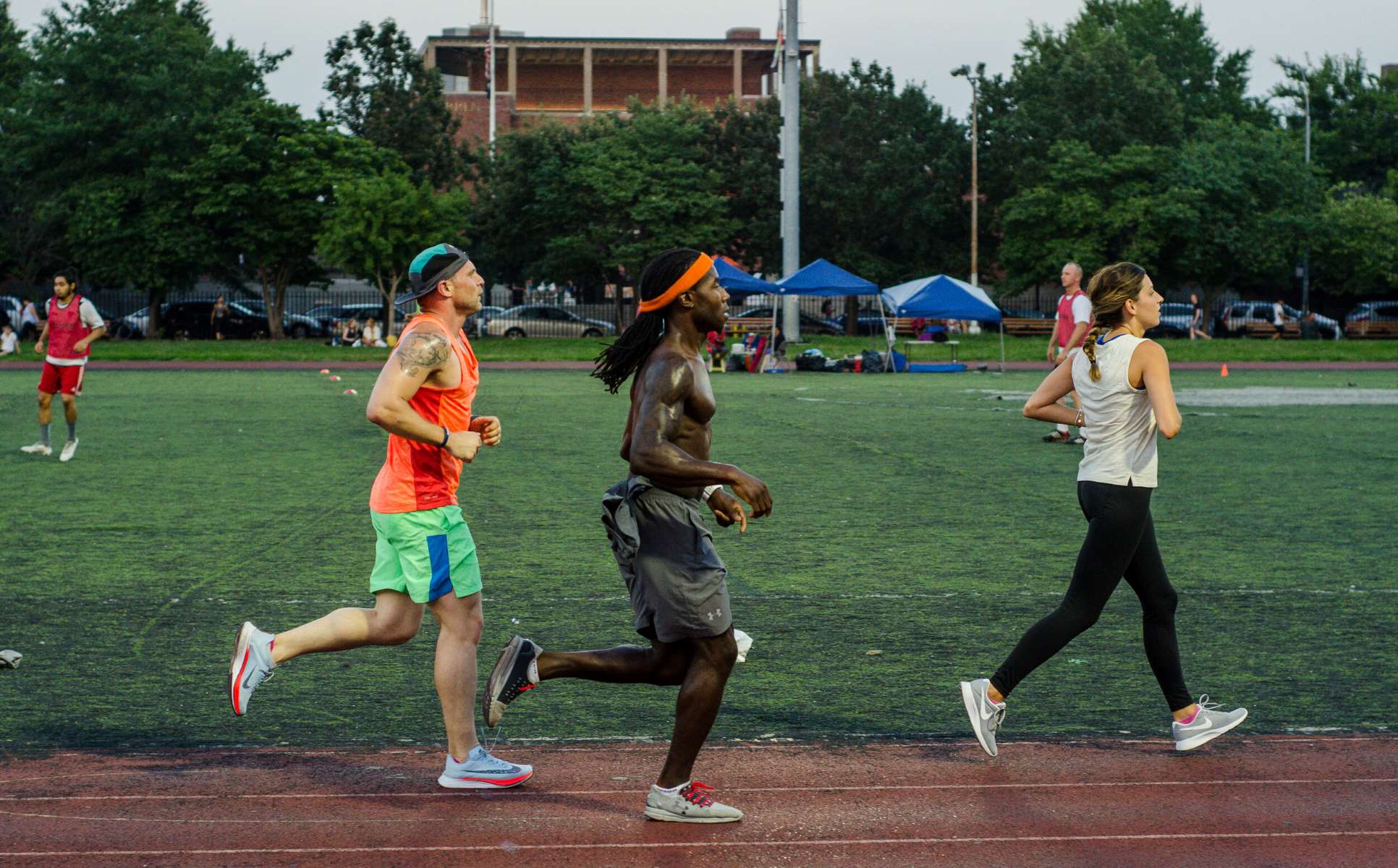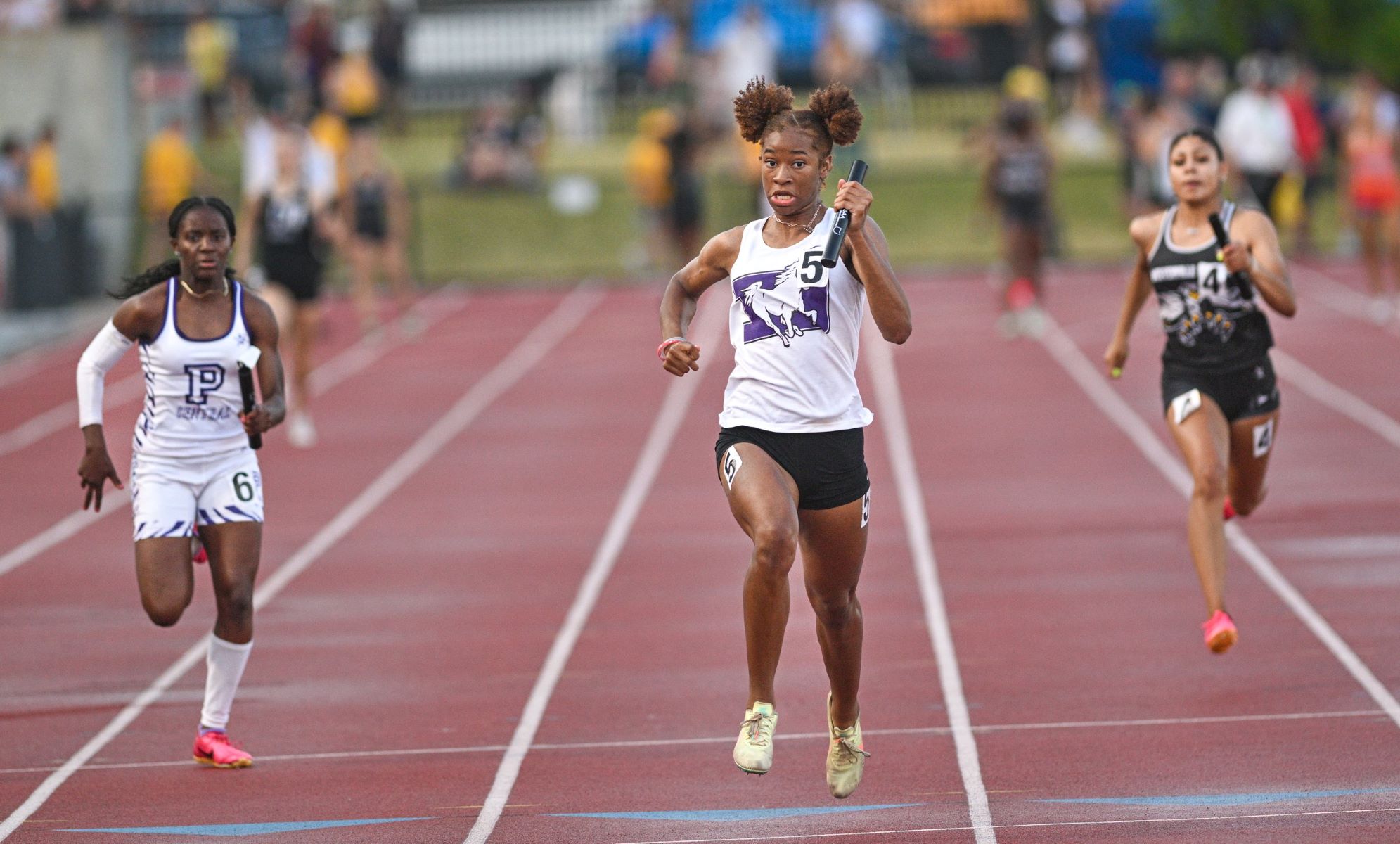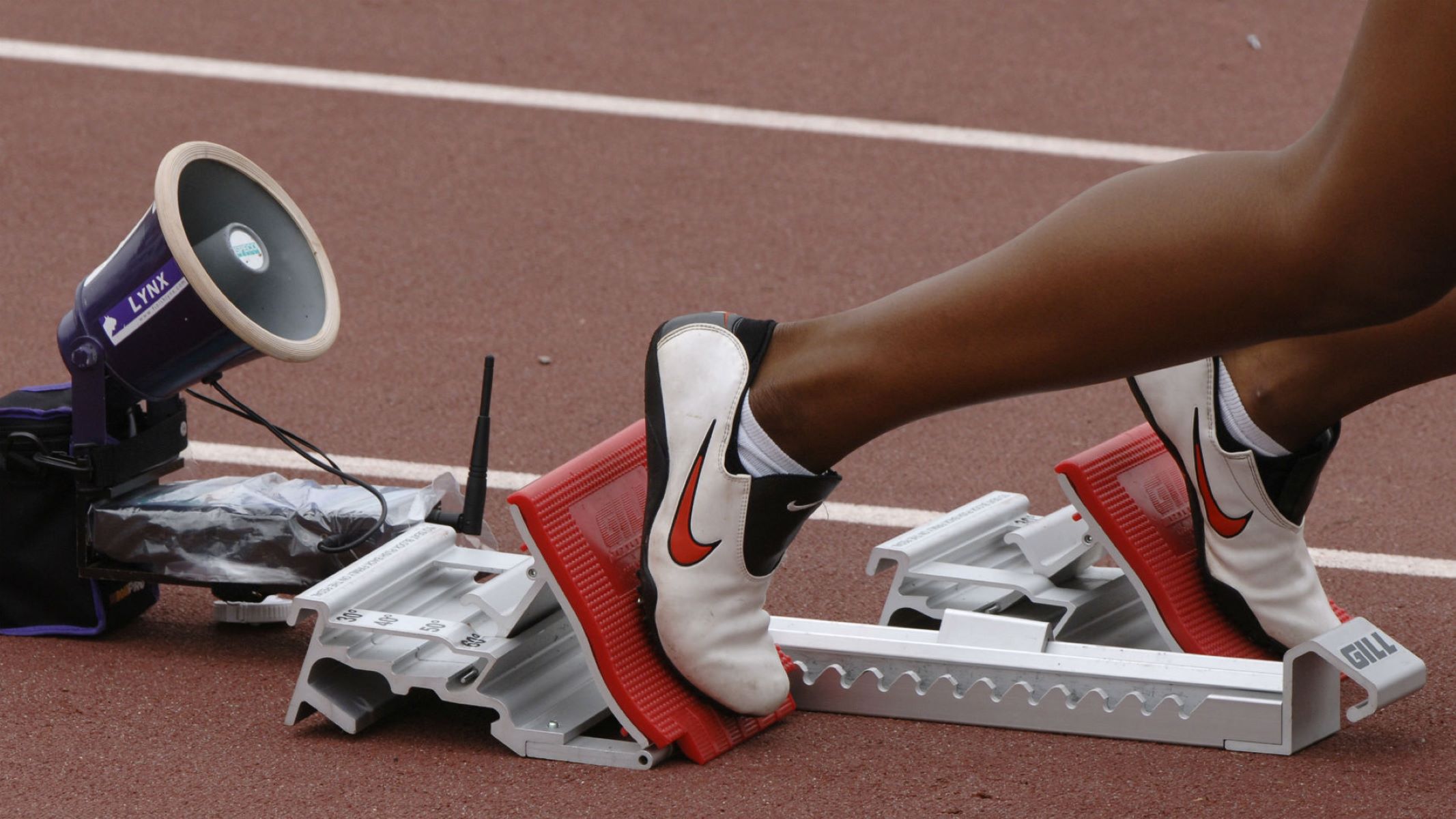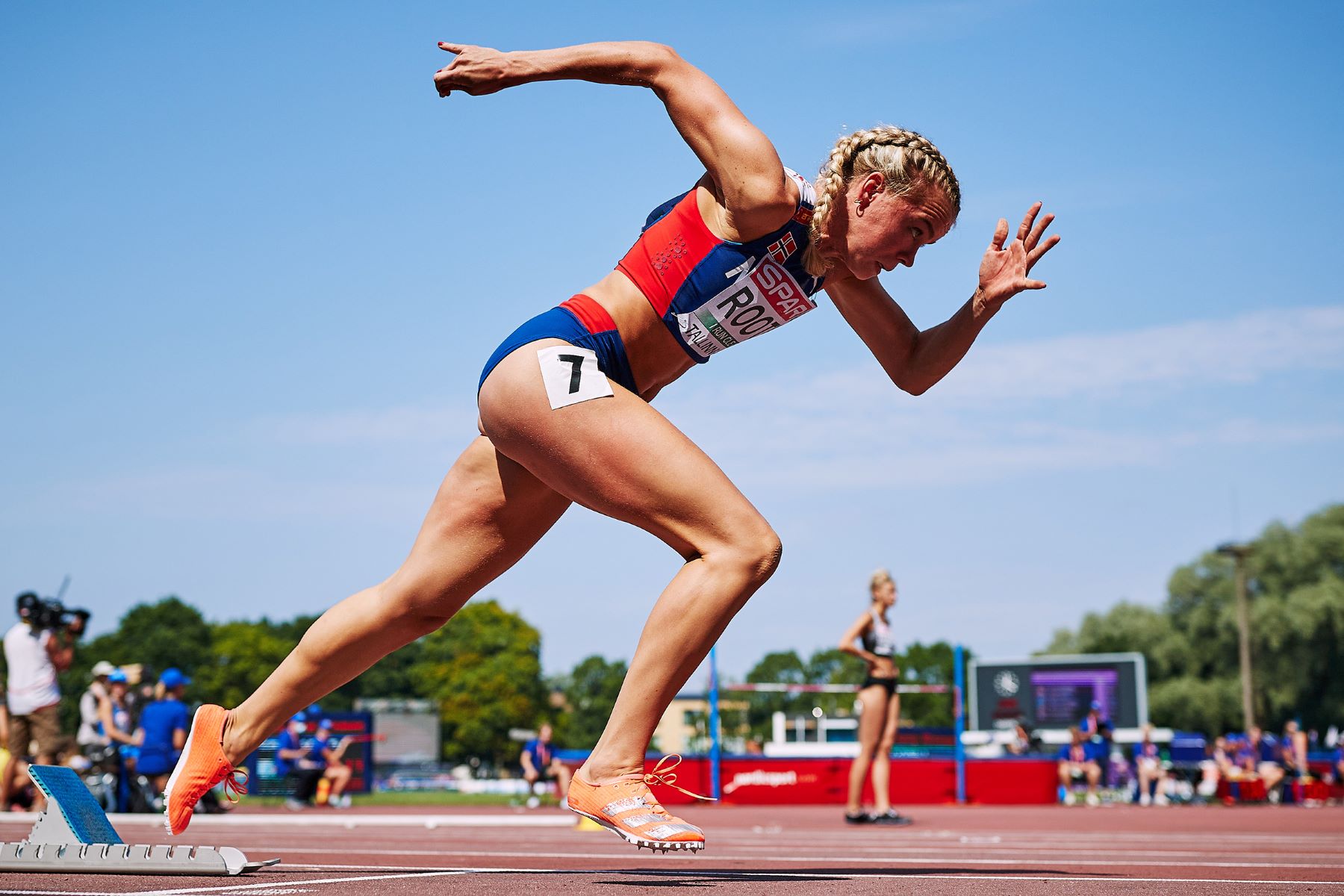

Featured
What To Wear To Track And Field
Modified: January 2, 2024
Discover the latest track and field fashion trends with our featured collection. Find the perfect outfit for your next race or training session.
Introduction
Track and field is a dynamic sport that combines athleticism, speed, and precision. Whether you’re a seasoned athlete or a beginner, having the right attire is crucial for optimal performance and comfort. The sport of track and field encompasses various events, each with unique demands and requirements. Choosing the appropriate clothing not only enhances your performance but also ensures your safety and adherence to competition regulations.
In this article, we will explore the importance of proper attire in track and field and provide insights into clothing options for different events. We will delve into specific attire recommendations for sprinting, long-distance running, jumping and hurdling, throwing events, pole vault, high jump, and relays. Additionally, we will discuss key factors to consider when choosing track and field attire and provide helpful tips for maintaining your performance gear.
Whether you’re participating in a high school track meet, collegiate competition, or recreational event, understanding the significance of suitable attire will give you a competitive edge. From weather conditions to personal preferences, there are several aspects to consider when selecting the right clothing for track and field. By the end of this article, you will be well-equipped with the knowledge to make informed decisions about what to wear to track and field events, maximizing your performance and comfort.
Importance of Proper Attire in Track and Field
When it comes to track and field, having the right attire is more than just a fashion statement. It can have a direct impact on your performance, safety, and overall experience. Here are some key reasons why wearing proper attire is essential in track and field:
1. Performance Enhancement: The right clothing can significantly improve your performance in track and field events. Lightweight and breathable fabrics, specifically designed for athletic activities, can enhance your range of motion and minimize drag. This allows you to move more freely and efficiently, giving you a competitive advantage.
2. Injury Prevention: Track and field involve high-impact movements such as running, jumping, and throwing. Wearing appropriate attire, such as well-fitting shoes and supportive clothing, can help reduce the risk of injuries. Shoes with proper cushioning and arch support minimize the impact on joints and reduce the likelihood of strains or sprains.
3. Regulation Compliance: Each track and field event has specific rules and regulations regarding attire. Wearing the correct uniform and equipment ensures fair competition and prevents disqualification. It’s essential to familiarize yourself with the guidelines set by the governing bodies to avoid any penalties or setbacks.
4. Comfort and Confidence: Participating in track and field requires intense physical exertion. Wearing comfortable and well-fitted attire allows you to focus on your performance without any distractions. When you feel confident in your clothing, it can positively impact your mindset and overall performance.
5. Weather Protection: Track and field events take place in various weather conditions, including extreme heat, rain, or cold temperatures. Appropriate attire, such as moisture-wicking fabrics and layering options, can help regulate body temperature and protect you from the elements. This ensures that you can perform at your best regardless of the weather.
By understanding the importance of proper attire in track and field, you can optimize your performance and maximize your potential. Investing in high-quality athletic wear and adhering to the regulations set by the sport’s governing bodies will not only enhance your experience but also contribute to a safer and fair competition environment.
Clothing Options for Track and Field Events
When it comes to track and field events, different disciplines require specific clothing options to support the unique movements and demands of each event. Here are some recommended attire choices for various track and field events:
1. Sprinting: Sprinters require clothing that allows for maximum speed and freedom of movement. Choose lightweight shorts or tights for optimal flexibility. A moisture-wicking top will help keep you cool and dry during intense sprinting sessions. Additionally, investing in sprinter-specific spikes will provide the necessary traction for explosive starts and quick acceleration.
2. Long Distance Running: Long distance runners prioritize comfort and breathability. Opt for moisture-wicking and lightweight fabrics that allow for proper ventilation. Consider wearing a singlet or sleeveless top paired with shorts or running tights. Cushioned and supportive running shoes with appropriate arch support are also essential for endurance and minimizing the risk of injury.
3. Jumping and Hurdling: Jumpers and hurdlers require clothing that enables ease of movement and flexibility. Choose form-fitting shorts or leggings to prevent any interference during takeoffs and landings. Pair this with a supportive and breathable top. Additionally, make sure to wear proper footwear with adequate ankle support for stability and cushioning to protect against impact.
4. Throwing Events: Athletes participating in throwing events, such as shot put or discus, need attire that provides a wide range of motion and durability. Opt for loose-fitting shorts or pants that allow for unrestricted movement. Choose a moisture-wicking top to keep you dry during strenuous activities. Additionally, wearing non-slip shoes with a strong grip will provide stability and help maintain balance during the throwing motion.
5. Pole Vault and High Jump: Pole vaulters and high jumpers require clothing that allows for maximum flexibility and protection. Opt for tight-fitting and stretchy garments, such as compression shorts or leggings, to minimize any interference during leaps. Combine this with a supportive and breathable top. It is essential to wear specialized spiked shoes designed for pole vaulting or high jumping, providing the necessary grip and traction for takeoff and landing.
6. Relays: For relay events, athletes typically wear a team uniform provided by their school or club. These uniforms are designed to foster a sense of unity among team members. It is essential to ensure that the uniform meets the regulations specified by the competition governing body.
Remember to consider the unique requirements of each track and field event when choosing your attire. Selecting the right clothing options will provide the comfort, flexibility, and support needed to perform at your best in each specific discipline.
Sprinting
Sprinting is an exhilarating track and field event that requires explosive speed and agility. To optimize your sprinting performance, it’s crucial to choose the right clothing that facilitates your movements and enhances your comfort. Here are some recommended clothing options for sprinting:
Shorts or Tights: When it comes to sprinting, lightweight and form-fitting shorts or tights are ideal. These garments allow for maximum flexibility and minimize drag, enabling you to move freely. Look for moisture-wicking fabrics that help keep you cool and dry during intense sprints.
Moisture-Wicking Top: Select a moisture-wicking top that is breathable and lightweight. This type of fabric helps regulate your body temperature by efficiently wicking away sweat, preventing discomfort caused by excessive moisture. Opt for sleeveless or short-sleeved tops that allow for unrestricted arm movement.
Sports Bra: Female sprinters should invest in a supportive sports bra that provides comfort and proper support while minimizing any discomfort or distractions. Look for a bra with moisture-wicking properties and adjustable straps for a personalized fit.
Sprinter-Specific Spikes: Choose sprinter-specific spikes that are lightweight and offer excellent traction. These specially designed shoes have minimal cushioning to facilitate explosive starts and quick acceleration. Ensure that the spikes fit snugly and provide the necessary support and stability for efficient sprinting.
Accessories: Consider wearing sweat-wicking headbands or wristbands to keep sweat away from your face and hands, improving your grip and focus. Additionally, wearing sunglasses with UV protection can help shield your eyes from the sun’s glare, enhancing visibility and reducing eye strain.
Warm-Up Gear: Before sprinting, it’s essential to keep your muscles warm and limber. Layering with warm-up gear such as track pants and a lightweight jacket can help you maintain body heat and prevent muscle stiffness or injury.
Remember to experiment with different clothing options during training sessions to find the combination that works best for you. Prioritize lightweight, breathable, and moisture-wicking fabrics to maximize your performance and comfort while sprinting. By choosing the right attire, you’ll be well-equipped to sprint your way to the finish line with speed and confidence.
Long Distance Running
Long distance running requires stamina, endurance, and the ability to maintain a steady pace over extended distances. To perform your best in this track and field event, it’s important to choose clothing that prioritizes comfort, breathability, and flexibility. Here are some recommended clothing options for long distance running:
Moisture-Wicking and Lightweight Fabric: Opt for clothing made from moisture-wicking materials that keep sweat away from your skin and allow for optimal breathability. Lightweight fabrics, such as polyester blends or technical fabrics, are ideal for long distance running as they help regulate body temperature and prevent overheating.
Running Shorts or Tights: Choose running shorts or tights that provide a comfortable fit and allow for a wide range of motion. Look for options with built-in or separate compression shorts to minimize discomfort and chafing. Consider the length that feels most comfortable to you, whether it’s mid-thigh shorts or full-length tights.
Singlets or Breathable Tops: Opt for singlets or lightweight and breathable tops that allow for ventilation while wicking away moisture. Look for options with mesh panels or strategic ventilation to enhance airflow and keep you cool during your long-distance runs.
Sports Bra (for women): Female long distance runners should invest in a high-quality sports bra that offers the right support and comfort for their individual needs. Look for options with adjustable straps, moisture-wicking properties, and a fit that minimizes bounce and discomfort.
Socks and Running Shoes: Choose moisture-wicking socks that provide cushioning and support to minimize friction and blister formation. When it comes to running shoes, opt for a pair that matches your foot type and provides adequate cushioning, support, and stability for long distances. Properly fitted shoes will help reduce the risk of injuries and enhance your running experience.
Headwear and Sunglasses: Consider wearing a lightweight and breathable hat or visor to shield your face from the sun and manage sweat. Sunglasses with UV protection can protect your eyes from harmful rays and reduce glare, improving your visibility during your runs.
Reflective Gear: If you tend to run in low-light conditions or at dawn or dusk, wear reflective gear to ensure your visibility to motorists and other runners. Reflective vests, armbands, or jackets can significantly enhance your safety during early morning or evening runs.
Layering Options: Depending on the weather conditions, layering can be beneficial for long distance running. Add or remove layers as needed to maintain your body temperature. Consider lightweight jackets or long-sleeve shirts that can be easily tied around your waist or stashed in a pocket when not in use.
Always prioritize comfort, functionality, and breathability when selecting clothing for long distance running. Experiment with different options during your training runs to find the apparel that works best for you. By wearing the right attire, you’ll be able to focus on your run and perform at your best, mile after mile.
Jumping and Hurdling
Jumping and hurdling events in track and field require a combination of explosive power, agility, and precise technique. To perform at your best in these events, it’s important to choose clothing that allows for unrestricted movement while providing support and protection. Here are some recommended clothing options for jumping and hurdling:
Form-Fitting Shorts or Leggings: Opt for form-fitting shorts or leggings that allow for a full range of motion without any interference. These garments should be made from stretchy and breathable fabrics that provide comfort and flexibility during takeoffs and landings. Look for options with moisture-wicking properties to keep you dry throughout your performance.
Supportive and Breathable Top: Select a supportive and breathable top that allows for arm movement without restriction. Consider options such as compression shirts or sleeveless tops made from moisture-wicking materials that help regulate body temperature and prevent discomfort caused by excessive sweating.
Sports Bra (for women): Female athletes participating in jumping and hurdling events should wear a sports bra that provides the necessary support and minimizes movement during intense performances. Look for a sports bra designed for high-impact activities, with adjustable straps and moisture-wicking properties for added comfort.
Proper Footwear: Choose athletic shoes that provide excellent cushioning, stability, and grip. Opt for shoes specifically designed for jumping or hurdling, as they offer additional support and features to enhance performance. Look for a secure fit that supports your feet and ankles during takeoffs and landings.
Protective Gear: When participating in certain jumping events like the high jump or pole vault, additional protective gear may be required. This can include knee pads or shin guards to protect against potential impact or bruises during falls or contact with equipment. Make sure to check the rules and regulations of your competition to ensure compliance with the required protective gear.
Accessories: Consider wearing sweat-wicking headbands or wristbands to help keep sweat away from your face and hands, improving your grip and focus. Additionally, wearing sunglasses with UV protection can shield your eyes from the sun’s glare and enhance visibility, especially during outdoor events.
Warm-Up Gear: Prior to your jumping or hurdling performance, it’s crucial to properly warm up your muscles. Wear warm-up gear such as track pants, lightweight jackets, or sweaters to maintain body heat and prevent muscle stiffness or injury. Easily removable layers allow for quick adjustments before your event begins.
By wearing the right attire for jumping and hurdling events, you can optimize your performance, focus on your technique, and minimize distractions. Ensure that your clothing is comfortable, supportive, and suitable for the specific requirements of your chosen event. With the right attire, you’ll have the confidence to soar over the bar or conquer the hurdles with style and precision.
Throwing Events
Throwing events in track and field, such as shot put and discus, require strength, technique, and precision. To excel in these events, it’s important to select appropriate clothing that allows for a full range of motion while providing durability and protection. Here are some recommended clothing options for throwing events:
Loose-Fitting Shorts or Pants: Opt for loose-fitting shorts or pants that allow for unrestricted movement during the throwing motion. Choose materials that offer durability and flexibility to withstand the demanding nature of these events. Look for options with moisture-wicking properties to keep you dry and comfortable during intense throwing sessions.
Moisture-Wicking Top: Select a moisture-wicking top that is breathable and allows for a full range of motion in your arms and shoulders. Consider options with mesh panels or strategic ventilation to enhance airflow and prevent overheating during your throws. Look for a comfortable fit without any restrictions.
Sports Bra (for women): Female athletes participating in throwing events should wear a sports bra that offers proper support during powerful movements. Look for a sports bra designed for high-impact activities, with adjustable straps and moisture-wicking properties to ensure comfort and minimize any distractions.
Throwing Shoes: Choose throwing shoes specifically designed for shot put or discus events. These shoes typically have a flat sole and a wide base for stability during the rotational or glide techniques used in throwing. They provide excellent traction and support to help generate power and maintain balance during your throws.
Gloves: Consider wearing gloves specifically designed for throwing events. These gloves provide a better grip on the implements and protect your hands from friction or potential blisters. Look for gloves with padding or extra grip on the palm and fingers for enhanced performance.
Protective Gear: Depending on the throwing event, you may need additional protective gear. For example, shot putters often wear a pad on their neck or shoulder to protect against impact during the release. Make sure to check the regulations and requirements of your competition to ensure proper compliance with necessary protective gear.
Accessories: Consider wearing sweat-wicking headbands or wristbands to keep sweat away from your face and hands, improving your grip and focus. Additionally, sunglasses with UV protection can shield your eyes from the sun’s glare and improve visibility during outdoor events.
Warm-Up Gear: Don’t forget to wear warm-up gear, such as track pants and a lightweight jacket, to keep your muscles warm and maintain flexibility during warm-up sessions. Easily removable layers allow for easy adjustments as you prepare for your throwing event.
By choosing the right attire for throwing events, you can enhance your performance, maximize your comfort, and minimize distractions. Prioritize clothing that allows for freedom of movement, durability, and protection. With the appropriate attire, you’ll be well-prepared to showcase your strength and technique in shot put, discus, and other throwing events.
Pole Vault and High Jump
Pole vault and high jump are thrilling track and field events that require a combination of speed, technique, and agility. To excel in these events and safely navigate the heights, it’s crucial to select the right attire that provides flexibility, support, and protection. Here are some recommended clothing options for pole vault and high jump:
Tight-Fitting Shorts or Leggings: Opt for tight-fitting shorts or leggings that allow for a full range of motion without any interference. These garments should be made from stretchy and breathable fabrics that provide comfort and flexibility during takeoffs, landings, and bar clearance. Look for options with moisture-wicking properties to keep you dry and comfortable throughout your performance.
Supportive and Breathable Top: Select a supportive and breathable top that allows for arm movement without restriction. Consider options such as compression shirts or sleeveless tops made from moisture-wicking materials that help regulate body temperature and prevent discomfort caused by excessive sweating.
Proper Footwear: Choose specialized shoes designed for pole vault or high jump events. These shoes offer a blend of cushioning, stability, and grip to support your feet and ankles during takeoffs and landings. Look for shoes with a secure fit and an outsole that provides traction on the track or pit.
Protective Gear: When participating in pole vaulting, additional protective gear may be required. Consider wearing a helmet to protect your head in case of falls or contact with the pole. Make sure to check the rules and regulations of your competition to ensure compliance with the required protective gear.
For high jump, additional protective gear may also be necessary. Wearing high jump pads or mats around the bar can provide a cushioned landing area and help prevent injury. Always follow the guidelines and safety measures outlined for these events.
Warm-Up Gear: Before attempting pole vault or high jump, it’s important to keep your muscles warm and flexible. Wear warm-up gear such as track pants, lightweight jackets, or sweaters to maintain body heat and prevent muscle stiffness or injury. Easily removable layers allow for quick adjustments before your event begins.
Accessories: Consider wearing sweat-wicking headbands or wristbands to keep sweat away from your face and hands, improving your grip and focus. Additionally, sunglasses with UV protection can shield your eyes from the sun’s glare and enhance visibility, especially during outdoor events.
By wearing the right attire for pole vault and high jump events, you can optimize your performance, focus on your technique, and minimize distractions. Ensure that your clothing provides the necessary support, flexibility, and protection required for these dynamic and technically demanding events. With the right attire, you’ll have the confidence to clear heights and reach new heights in your pole vault or high jump performances.
Relays
Relay events in track and field are exciting team-based competitions that require coordination, speed, and seamless baton exchanges. When participating in relay events, athletes typically wear a team uniform provided by their school or club. The uniform serves several important purposes and helps foster a sense of unity among team members. Here are some key considerations when it comes to relay attire:
Team Uniform: Relays usually require teams to wear matching uniforms that represent their school, club, or national colors. This uniformity not only creates a cohesive and professional appearance but also allows for easy identification of team members by officials and spectators. The team uniform typically includes a top and bottom that are consistent for all relay team members.
Regulation Compliance: It is important to ensure that the team uniform complies with the rules and regulations set by the governing bodies of the competition. Familiarize yourself with the specific guidelines, including guidelines regarding logos, colors, uniform design, and permissible alterations. Failure to comply with these rules may result in disqualification or other penalties for the team.
Comfort and Flexibility: While relay uniforms aim to create a unified look, it is also crucial that they provide comfort and flexibility for athletes. Look for uniforms made from moisture-wicking fabrics that keep you dry and comfortable during the race. Additionally, consider the fit of the uniform to ensure it allows for freedom of movement and does not restrict your running motions.
Team Accessories: Alongside the uniform, relay teams may choose to wear matching accessories such as headbands, wristbands, or socks to further enhance their team identity. These accessories can also serve practical purposes, such as keeping sweat away from the eyes or providing additional support.
Proper Footwear: Each relay team member should wear appropriate athletic shoes designed for their running style and event. The shoes should provide comfort, cushioning, and traction to enhance performance and minimize the risk of injuries. It is important to select shoes that are comfortable and properly fitted to each team member’s feet.
Additional Team Gear: Depending on the specific relay event, teams may require additional gear or equipment such as batons, timing chips, or relay markers. Ensure that you are familiar with the specific equipment requirements and are prepared with all necessary items for a smooth and successful relay race.
Participating in a relay event is a unique opportunity to work together as a team and achieve a collective goal. Embrace the team spirit and pride that comes with wearing a uniform, and remember to adhere to the rules and regulations set by the competition organizers. By wearing a unified and well-fitted uniform, you and your relay team will not only look the part but also perform with confidence and unity on the track.
Factors to Consider When Choosing Track and Field Attire
When it comes to track and field, choosing the right attire is crucial for optimal performance, comfort, and adherence to competition regulations. Here are some important factors to consider when selecting your track and field attire:
1. Weather Conditions: Take into account the weather conditions of the event day. Choose attire that provides appropriate protection and comfort. In hot weather, opt for lightweight and breathable fabrics to keep you cool. In cold or rainy conditions, layering options and weather-resistant fabrics can help regulate body temperature and keep you dry.
2. Comfort and Flexibility: Prioritize clothing that allows for a full range of motion and provides comfort throughout your event. Look for garments made from stretchy and breathable materials that wick away moisture. Properly fitting attire is vital to prevent distractions and discomfort during your performance.
3. Rules and Regulations: Familiarize yourself with the rules and regulations specific to your event. Each track and field event has guidelines concerning the type of attire and equipment allowed. Ensure that your attire complies with the competition regulations regarding color, design, logos, and uniform requirements. Failure to adhere to these rules may result in penalties or disqualification.
4. Style and Personal Preferences: While functionality is essential, some athletes may also consider personal style and preferences when choosing their attire. Select clothing that makes you feel confident and comfortable, and reflects your personality. However, always prioritize performance and adhere to the rules and regulations set by the competition.
By considering these factors, you can make informed decisions when selecting your track and field attire. Choosing the right clothing that matches the specific requirements of your event, weather conditions, and personal preferences will not only enhance your performance but also contribute to a comfortable and enjoyable experience on the track.
Weather Conditions
The weather conditions during a track and field event can have a significant impact on an athlete”s performance and overall experience. It is essential to consider the weather when choosing your attire to ensure you are prepared for any situation. Here are some factors to consider when it comes to weather conditions:
Hot Weather: In hot weather, it is crucial to wear clothing that keeps you cool and prevents overheating. Opt for lightweight and breathable fabrics that allow for proper airflow and ventilation. Moisture-wicking materials are also beneficial as they draw sweat away from your skin, keeping you dry and comfortable. Consider wearing shorts and a sleeveless or short-sleeved top to maximize air circulation and minimize heat retention.
Cold Weather: When participating in track and field events in cold weather, layering becomes essential to maintain body temperature. Start with a moisture-wicking base layer that keeps sweat away from your skin. Add a thermal layer for insulation and top it off with a lightweight, wind-resistant jacket or vest. Make sure to wear long pants or tights to keep your legs warm. Additionally, don’t forget to wear a hat and gloves to protect your extremities from the cold.
Wet Weather: In rainy or wet conditions, it is important to choose clothing that repels water and prevents you from getting soaked. Look for water-resistant or waterproof materials that keep you dry during the event. Consider wearing a waterproof jacket or a rain poncho to protect yourself from the rain. Additionally, moisture-wicking fabrics are still important to prevent sweat buildup and discomfort even in wet conditions.
Extreme Conditions: In extreme weather conditions such as extreme heat or cold, it may be necessary to take additional precautions. For extreme heat, consider wearing a cap or visor to protect your face from the sun. Apply sunscreen to exposed skin to prevent sunburn. In extreme cold, thermal clothing and accessories such as hand warmers or face masks may be necessary to protect yourself from frostbite or hypothermia. Pay attention to any advice or warnings from event organizers regarding extreme weather conditions.
Always check the weather forecast before your track and field event and be prepared for any changes. Dressing appropriately for the weather conditions will not only enhance your performance but also ensure your safety and overall comfort during the event. It is better to be prepared and have the right attire for any weather scenario than to be caught off guard and face potential challenges or discomfort on the track.
Comfort and Flexibility
Comfort and flexibility are paramount when it comes to choosing the right attire for track and field events. Clothing that allows for a full range of motion and provides comfort throughout your performance will enhance your overall experience on the track. Here are some factors to consider:
Freedom of Movement: Look for clothing that allows you to move freely and does not restrict your range of motion. Opt for garments with stretchy materials that provide flexibility in key areas, such as shorts or leggings with an elastic waistband or tops with raglan sleeves. The ability to move without hindrance is crucial in track and field events where speed and agility are essential.
Proper Fit: Ensuring that your attire fits properly is crucial for comfort and optimal performance. Clothing that is too tight can restrict movement and cause discomfort, while clothing that is too loose may lead to distractions or pose a safety hazard. Choose clothing that fits well and provides support without constricting your movements. Pay attention to the sizing and consider trying on different sizes or styles to find the best fit for your body type.
Breathability: Look for clothing made from breathable fabrics that promote air circulation and help regulate body temperature. Moisture-wicking materials are particularly beneficial as they draw sweat away from your skin, keeping you dry and comfortable. Proper ventilation and moisture management are especially important during intense activities to prevent overheating and chafing.
Seam Placement: Pay attention to the placement of seams in your clothing. Flat or strategically placed seams can help reduce irritation or chafing during repetitive movements. Look for garments with smooth seams that are less likely to rub against your skin and cause discomfort during your performance.
Temperature Regulation: Choose clothing that allows for temperature regulation based on the specific weather conditions. Layering options can be useful for adapting to changing temperatures during training or competitions. Having the ability to add or remove a layer as needed helps maintain comfort throughout your performance.
Testing and Comfort: It”s important to test your attire during training sessions to ensure comfort, especially for longer events such as distance running. Practice in your chosen clothing to identify any potential discomfort or chafing areas, and make adjustments accordingly. Comfort is subjective, so pay attention to how your body feels and listen to any discomfort signals to find the right clothing for you.
Remember, comfort and flexibility are essential for optimal performance and enjoyment during track and field events. Choosing the right attire that allows for freedom of movement, proper fit, breathability, and temperature regulation will help you focus on your performance and achieve your best results on the track.
Rules and Regulations
When participating in track and field events, it’s crucial to consider the rules and regulations pertaining to attire set by the governing bodies. Adhering to these guidelines ensures fair competition, prevents unnecessary penalties or disqualifications, and maintains the integrity of the sport. Here are some key points to keep in mind:
Uniform Requirements: Each track and field event may have specific uniform requirements that govern the type of attire allowed. Check the rules and regulations of your competition to ensure compliance with designated colors, uniform design, logos, or any specific guidelines regarding uniform alterations.
Logo and Sponsorship Restrictions: Be aware of any restrictions on logos or sponsorships that may be imposed by the competition organizers. Some events may limit the size, type, or placement of logos on uniforms. Familiarize yourself with these requirements to avoid penalties or disqualification.
Equipment Regulations: Aside from attire, track and field events also have rules and regulations regarding equipment usage. Familiarize yourself with any requirements or restrictions related to the use of specialized shoes, implements, or accessories specific to your event. Failure to comply with these regulations may result in disqualification.
Compulsory Safety Gear: Some events may require athletes to wear compulsory safety gear for their protection. This can include helmets, pads, or other protective equipment. It’s crucial to understand and follow the rules regarding safety gear to ensure a safe competition environment.
Number Placement: For team events or races, there may be specific rules regarding the placement and visibility of numbers or team identification on uniforms. Ensure that numbers or team logos are correctly displayed on the front or back of uniforms as required by the competition regulations.
Verification and Inspections: Athletes may be subject to verification and inspection of their attire prior to or during the event. Officials may check uniform compliance, equipment, and safety gear to ensure that all competitors are following the rules and regulations. Be prepared to cooperate and provide any necessary documentation or information during these inspections.
It is the responsibility of every track and field athlete to stay informed about the rules and regulations set by the governing bodies. Understanding and adhering to these guidelines ensures fair competition and contributes to the smooth running of events. Stay up to date with any updates or changes to the rules and regulations and seek clarification from event organizers if you have any questions or concerns regarding your attire.
Style and Personal Preferences
While functionality and adherence to rules are important factors to consider when choosing track and field attire, it’s also essential to take into account your personal style and preferences. Your clothing choices can play a role in your overall confidence and performance on the track. Here are some points to consider in terms of style and personal preferences:
Comfort and Confidence: When selecting your attire, prioritize comfort and how it makes you feel. The confidence that comes from wearing clothing that you feel good in can positively impact your mindset and performance. Choose garments that reflect your personal style and make you feel comfortable and confident in your abilities.
Color and Design: Consider the colors and patterns of your clothing. Some athletes may prefer vibrant and bold colors to stand out, while others may gravitate towards more neutral or team-specific colors. It’s important to strike a balance between personal style and any regulations regarding uniform colors or design imposed by the competition organizers.
Fit and Aesthetics: Pay attention to the fit of your attire and how it complements your body type. Different individuals may have different preferences when it comes to the length of shorts, the tightness of leggings, or the style of tops. Select clothing that accentuates your strengths, allows for comfortable movement, and compliments your physique.
Individuality: Track and field attire can be an opportunity for self-expression. While adhering to the rules, explore options that reflect your personal taste. Look for unique designs, cuts, or accessories that allow you to showcase your individuality within the confines of the regulations set by the competition organizers.
Practical Considerations: While style is important, remember to prioritize functionality and practicality. Consider the specific requirements of your event and choose attire that supports the movements and demands of your discipline. Look for materials that offer breathability, flexibility, and moisture-wicking properties to enhance your performance and comfort.
Choosing track and field attire that aligns with your personal style and preferences can contribute to a positive and enjoyable experience on the track. However, it’s crucial to strike a balance between personal style and conformity to the rules and regulations set by the competition organizers. When done right, you can find attire that not only enhances your performance but also reflects your unique personality and makes you feel confident as you compete in track and field events.
Tips for Maintaining Track and Field Attire
Proper care and maintenance of your track and field attire are essential to ensure longevity, performance, and continued comfort. Here are some valuable tips to help you keep your attire in top condition:
1. Follow Care Instructions: Pay attention to the care instructions provided by the manufacturers of your clothing. These instructions often include guidelines on washing, drying, and ironing. Following the specific care instructions will help preserve the fabric quality and prevent any damages or shrinkage.
2. Separate Clothes by Color: When laundering your track and field attire, separate dark-colored garments from light-colored ones to prevent color bleeding. This practice helps maintain the vibrancy and integrity of the colors.
3. Use Gentle Detergent: Opt for a gentle detergent specifically designed for activewear or sports clothing. Avoid using harsh chemicals, fabric softeners, or bleach as they can damage the fabric and compromise its moisture-wicking and breathability properties.
4. Wash in Cold Water: Wash your track and field attire in cold water, as hot water can cause shrinkage and damage moisture-wicking capabilities. Cold water helps preserve the elasticity of the fabric and prevents fading.
5. Air Dry or Low Heat: Air drying is the best option for preserving the quality and fit of your track and field attire. Hang your clothing on a drying rack or clothesline to let them air dry naturally. If using a dryer, use the lowest heat setting to prevent excessive heat damage.
6. Avoid Direct Sunlight: While drying your clothing, avoid exposing them to direct sunlight for extended periods. Prolonged sun exposure can cause fading and may affect the elasticity and overall condition of the fabrics.
7. Store Properly: When not in use, ensure your track and field attire is stored in a clean and dry area. Avoid cramming or folding the clothing tightly, as this may lead to wrinkles or deformities in the fabric. Consider folding or hanging them in a designated space to maintain their shape and integrity.
8. Repair Damages Promptly: Address any damages or tears in your track and field attire as soon as they occur. Use appropriate methods to mend small rips or tears or consider taking them to a professional for repairs. Prompt repairs can prevent further damage and prolong the lifespan of your clothing.
9. Rotate Your Attire: Frequently interchange your track and field attire to distribute wear evenly. This helps prevent overuse and extend the lifespan of your clothing. Having multiple sets of attire allows for easier rotation and ensures you always have clean and fresh options.
10. Regularly Inspect: Regularly inspect your track and field attire for any signs of wear, loose threads, or damaged seams. Addressing issues promptly can prevent further damage and ensure your clothing remains in top condition.
By following these tips, you can maintain the quality, performance, and longevity of your track and field attire. Taking care of your clothing not only extends their lifespan but also enhances your comfort and overall satisfaction as you compete in track and field events.
Conclusion
Choosing the right attire for track and field events is essential for optimal performance, comfort, and adherence to the rules and regulations of the sport. Whether you’re sprinting, long-distance running, jumping, throwing, or participating in relays, each event has specific clothing recommendations to support your movements and enhance your experience on the track.
Factors such as weather conditions, comfort and flexibility, rules and regulations, and personal preferences should all be considered when selecting your track and field attire. It’s important to strike a balance between functionality and style, ensuring that your clothing allows for unhindered movement while reflecting your personal taste and making you feel confident.
Maintaining your track and field attire is equally important. Proper care and storage will help preserve the quality and performance of your clothing, ensuring their longevity and continued comfort. Following care instructions, washing with cold water, air drying or using low heat, and addressing damages promptly are all essential steps to take in maintaining your gear.
By considering these factors and following the provided tips, you’ll be well-prepared to compete in track and field events with the right attire that boosts your performance and confidence. Remember, track and field is not only about physical prowess but also about embracing your personal style and expressing yourself as you strive for athletic excellence on the track.
